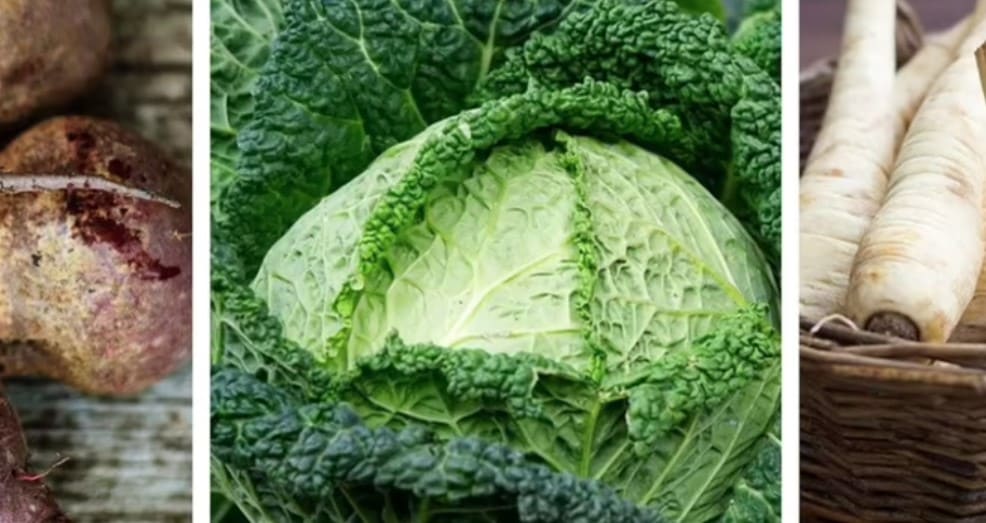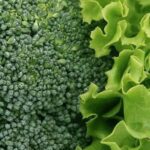A seasonal and healthy diet in winter that doesn’t just consist of white cabbage? It’s easier than you might think. We introduce you to five delicious types of winter vegetables – including tips and recipes for the perfect preparation.
Fewer fresh vegetables grow in winter than in summer, but there are still more winter vegetables than just white cabbage.
Winter vegetables such as parsnips, beetroot and salsify provide our body with important vitamins and minerals.
For the sake of the environment, you should ensure that winter vegetables are of regional origin from organic farming.
Admittedly, the fruit and vegetable harvest in winter is significantly lower than in the warm months. You quickly get the feeling that there is only fresh cabbage left to buy. But even in winter you can eat a varied, seasonal and healthy diet – with colorful winter vegetables. We will introduce you to five varieties and tell you the best way to prepare the winter vegetables.
Winter vegetables – more than just cabbage
In winter, body and soul need different food: warming casseroles, hearty stews, hot soups, spicy curries – everything that is not to be thought of in summer. Quiches and casseroles are also in season now.
A healthy and varied diet is also possible in winter. Because some local vegetables are also now available to buy fresh. The following applies to all types of winter vegetables: If possible, make sure that they are grown organically and check where the vegetables come from. In this way you can ensure that you support regional organic cultivation and thus pollute the environment less.
Parsnips
Parsnips are a healthy winter vegetable and are packed with vitamin C and potassium. Parsnips are similar in shape to carrots but have a white skin. There is also white flesh under the skin that tastes slightly sweet and earthy. Not to be confused with parsley roots, which are thinner than parsnips and have an outwardly curved leaf base.
Parsnips taste particularly delicious as a fried vegetable side dish or as a creamy soup. Since the root vegetable is easy to digest, it is also good for preparing baby food.
Brussels sprouts – a real winter vegetable
The round green Brussels sprouts are healthy and in season in winter. Brussels sprouts have a strong, rather bitter taste and provide our body with several important vitamins, minerals and fiber. The bitter substances it contains are also good for digestion.
Brussels sprouts taste delicious as an oven vegetable, in vegetable soup, in a stew and even as a hearty snack in the form of chips.
Brussels sprouts chips recipe
For the salty snack, wash the Brussels sprouts, cut out the stalk and separate the individual leaves.
Place the Brussels sprouts leaves in a bowl with the olive oil and sea salt and mix well.
Then place on a baking tray and roast in the oven at approx. 180 degrees for about ten minutes. When the edges of the leaves turn slightly brown, the snack is ready.
Beetroot
The red-pink tubers of the beetroot are not easy to prepare, as they quickly stain fingers and the surrounding area red; they taste delicious and are very healthy. The beetroot boasts several vitamins and minerals. Their color is due to the coloring agent betanin, which is said to have an antioxidant effect and is good for the cardiovascular system.
You can prepare beetroot raw as a salad, make a vegan spread out of it or process it into beetroot juice. The turnip also tastes deliciously sweet when boiled, as a soup (with horseradish foam!) or baked in the oven.
Tip: It is best to cook or bake beetroot with the skin on and only peel them afterwards so that the valuable ingredients are not lost.
Salsify
Black salsify is an often forgotten winter vegetable and is also known as winter asparagus. In fact, their shape resembles that of asparagus, and after peeling the black skin, their flesh is also white. In addition to vitamins and minerals, black salsify provides healthy dietary fiber. It tastes spicy and has a slightly nutty aroma.
Black salsify soup warms you from the inside on cold winter days. The winter asparagus also tastes like the “real” asparagus with potatoes and melted butter.
Savoy
The green head of cabbage is an extremely healthy winter vegetable: Savoy cabbage contains vitamins, minerals and mustard oils that protect the body from free radicals.
You probably know Savoy cabbage as a vegetable side dish and from the casserole. Raw or briefly blanched, it tastes delicious as a winter salad. You can also fill the large savoy cabbage leaves, for example with minced meat or vegetarian with lentils. Also highly recommended: savoy quiche and savoy lasagne.
In addition to the types of winter vegetables presented, there are others such as Jerusalem artichokes, turnips, red cabbage, white cabbage and kale as well as all types of pumpkin. So even in winter we can eat healthy and still have variety on our plates. For example, shaved red cabbage becomes a delicacy with balsamic vinegar, and curried kale becomes a completely new taste experience. And why not try a minestrone with different types of cabbage? If you are afraid of flatulence: Cooking caraway seeds counteracts this wonderfully.
In any case, the local goods provide everything the body needs in terms of nutrients. Our winter vegetables contain significant amounts of potassium, calcium, sodium and iron, as well as numerous essential vitamins. There are also plenty of secondary plant substances in the outdoor plants. These substances, which give the plant colour, fragrance or taste, are also important for the human organism.
And some vegetables don’t even have a “right” season: onions, leeks and mushrooms, for example, are grown all year round and you can always buy them freshly grown locally. Carrots and potatoes are also available year-round, for a few months from stock.
Tip: If you boil winter vegetables into a soup, this usually lasts for several days and you still have a healthy, warm lunch the next day. What also works very well: Freeze soup or cooked vegetables in portions and defrost them when you need something quick.



